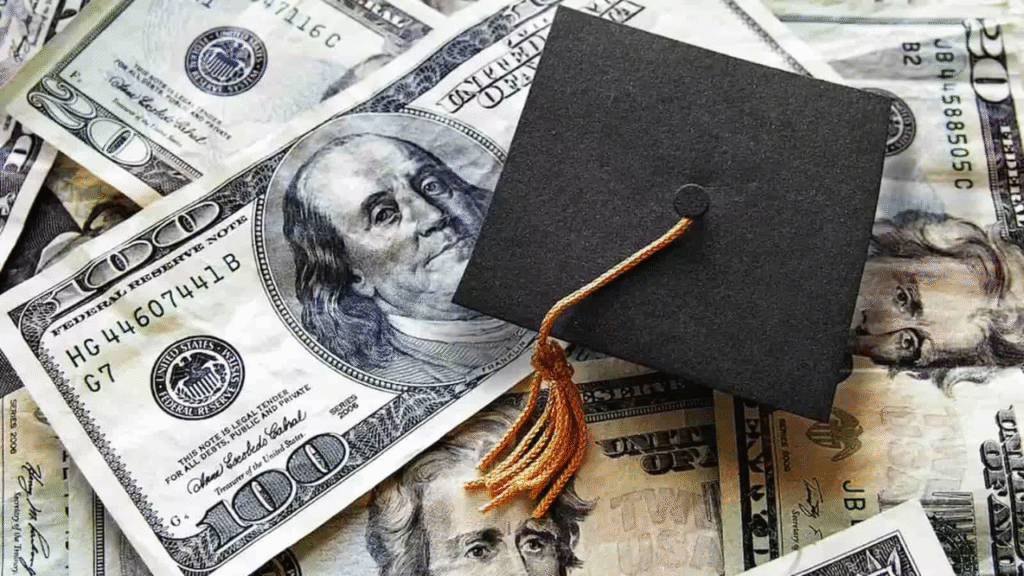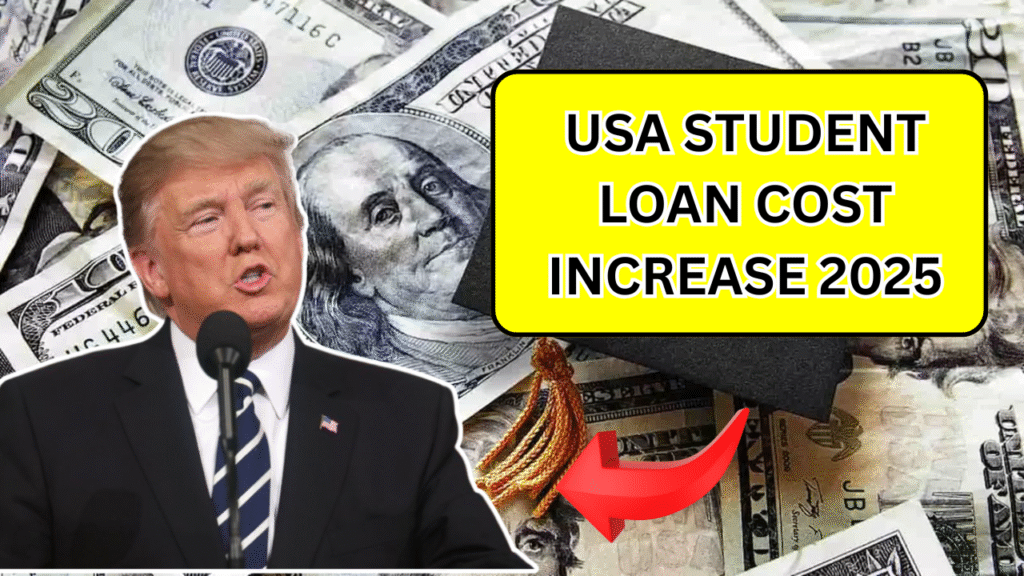The looming increase in student loan costs is causing considerable stress for millions of borrowers across the United States. New proposals to reform income-driven repayment (IDR) plans, particularly changes to the SAVE plan, are expected to increase monthly payments for many, putting more strain on families already struggling with rising costs.
For many, these reforms are more than just a policy change they represent a financial burden that could stretch their monthly budgets further. The U.S. government is seeking to reduce spending, but these changes could unintentionally make it harder for students to meet their financial obligations, leaving them vulnerable to greater financial instability.
Understanding the USA Student Loan Cost Increase for 2025
Program Changes:
The U.S. Department of Education has proposed significant changes to its student loan repayment programs. The most notable is the potential elimination of the SAVE repayment plan, which offers income-adjusted monthly payments, with some borrowers paying as little as $0. If these changes go through, borrowers will likely need to switch to other IDR plans that could demand higher monthly payments.
Projected Payment Increases
On average, borrowers could see their monthly payments rise by around $200, which will further strain individuals who are already financially stretched. This increase is part of a broader effort by the government to cut federal spending, but it is likely to create new challenges for millions of student loan borrowers.

Key Proposed Changes in Student Loan Policies
- Elimination of the SAVE Plan:
The SAVE plan was designed to help low-income borrowers by offering income-based monthly payments. However, the plan is now being challenged by Republicans, who advocate for its repeal. If this happens, borrowers will likely be forced to shift to more expensive repayment plans, increasing their financial burden. - Limited IDR Plan Options:
Currently, there are several IDR plans that allow borrowers to select a repayment option that best suits their financial situation. The new proposals aim to reduce this choice to just two options. While this move is expected to save the government $127.3 billion over the next decade, it significantly limits the flexibility that borrowers currently have to manage their loans. - Stricter Public Service Loan Forgiveness (PSLF) Requirements:
PSLF provides relief for public service workers like teachers, healthcare professionals, and law enforcement by forgiving their remaining loan balance after ten years of qualifying payments. However, new proposals would make it more difficult to qualify for this forgiveness, which could leave more workers burdened with student debt, contradicting the program’s original intent. - Tighter Borrowing Limits:
Another proposal is to tighten federal student loan borrowing limits. While this might prevent excessive borrowing, it could hurt low- and moderate-income students who rely on federal loans to fund their education. Without access to affordable federal loans, many students may be forced to turn to private lenders, who tend to offer higher interest rates, exacerbating long-term debt.
Why Are These Changes Happening?
The Republican-controlled House has pushed for these changes as part of a broader effort to reduce national debt, aiming to cut $2 trillion in spending. The focus on student loan reforms is rooted in concerns over the programs implemented under the Biden administration, which were not approved by Congress.
In an attempt to address the growing student debt crisis, the Biden administration had initially proposed forgiving up to $20,000 in student debt per borrower. However, this plan was blocked by the Supreme Court. As a result, lawmakers are now advocating for more conventional repayment systems rather than sweeping debt relief measures.
While the Senate has not yet made a definitive decision on these reforms, the government faces a deadline of March 14 to finalize policies. This means swift action will likely be taken on these proposed changes, which will have lasting consequences for borrowers.
How Can Students Prepare for the Changes?
With these reforms on the horizon, it’s crucial for borrowers to stay proactive about their loans. Here are some key steps students can take to prepare for potential payment increases:
- Track Your Loan Payments:
Students should regularly check their loan status and repayment details on studentaid.gov. Keeping track of payments will ensure there are no errors and help students manage their financial responsibilities. - Explore Repayment Options:
Students should consider exploring different repayment options to find the plan that best suits their financial situation. There may still be opportunities to reduce monthly payments, even with fewer plan options available. - Advocate for Student Loan Relief:
Students concerned about the potential impacts of these changes should advocate for loan relief policies. Engaging with lawmakers or participating in student loan relief movements can help bring attention to these issues.
FAQ,s
1. How much debt was canceled by the Biden administration?
The Biden administration attempted to forgive up to $20,000 in student debt per borrower, but the Supreme Court blocked the plan.
2. What is the average increase in payments that borrowers can expect?
Students can expect an average increase of about $200 per month.
3. What are the major changes to student loan policies?
The two most significant changes are the potential elimination of the SAVE plan and restrictions on the Public Service Loan Forgiveness program.



